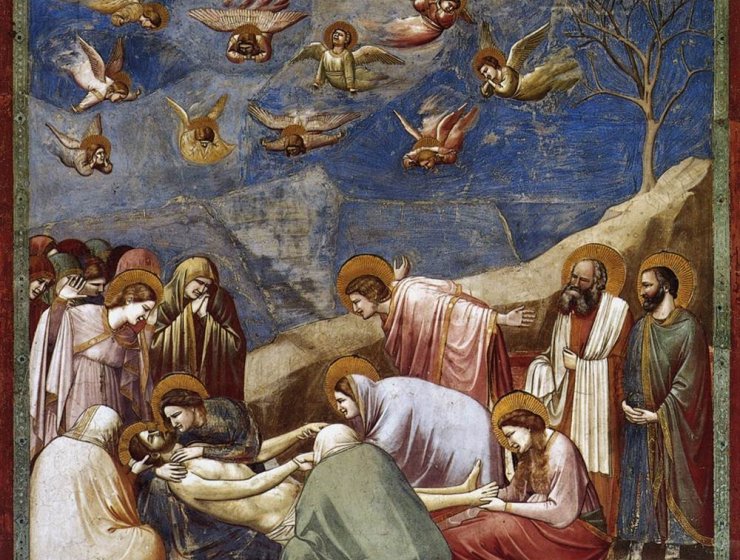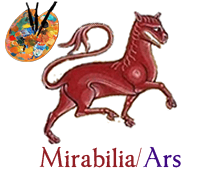
-Index-
Editorial: On issues of Art and Aesthetics
José María SALVADOR GONZÁLEZ
Original title: Sobre cuestiones de Arte y Estética
Tradition and fashion in Greek costume
Miguel Ángel ELVIRA BARBA, Marta CARRASCO FERRER
Original title: Tradición y moda en el traje griego
All along the 6th and 5th centuries B.C., the clothes of the Greek women experienced though changes, which seem connected with the evolution of mind, cultural activity and some political events. We can sometimes talk about true “fashion” in the modern sense of the world.
Thought and Culture in Christian Egypt 284-641 AD. Cyril of Alexandria (412-444) and his patriarchic period according to Socrates Scholasticus
Eirini ARTEMI
Original title: Pensamiento y cultura en el Egipto cristiano 284-641 AD. Cirilo de Alejandría (412-444) y su período patriarcal según Sócrates Escolástico
Cyril of Alexandria (412-444) was not only one of the finest Christian theologians of his day, he also stands out in the ranks of the greatest patristic writers of all generations as perhaps the most powerful exponent of Christology the church has known. He brought great influence both in church life and in making the Christian teaching and especially in the formulation of Christological doctrine in the 5th century. For the life of the holy father, little is known. He was born between 370-380 AD Alexandria. The exact date of his birth we are not able to know it. He came from a wealthy family of the Greek city of Alexandria, although often the patriarch of Constantinople Nestorius calls him “Egyptian”, i.e. one who hails from Egypt, in order to taunt him. Nowhere was the divide more clearly seen in 415 CE than between Orestes, the Pagan Prefect of Alexandria and Cyril, the Archbishop of Alexandria, who lead the Christian mobs against the Jews of Alexandria, looted their synagogues and expelled them from the city. Orestes maintained his Paganism in the face of Christianity and cultivated a close relationship with Hypatia which Cyril, perhaps, blamed for Orestes' refusal to submit to the “true” faith and become a Christian. Tensions between the two men, and their supporters, grew increasingly high as each brushed off the other's advances of reconciliation and peace. His early life is known only from notices in Socrates Scholasticus and a few elsewhere. The latter explains the relations of Cyril of Alexandria with Orestes and Hypatia. Also, Socrates, although, was enemy to Cyril of Alexandria remains the most objective source for the life and actions of Cyril of Alexandria.
The figure of St. Joseph in Art
Jesús CANTERA MONTENEGRO
Original title: La figura de San José en el Arte
The figure of St. Joseph has always been a great importance among the Christian believers. However, works of art did not always express, it and during the medieval times it almost seemed to be despised. Everything changed from the sixteenth century, where the figure started to be appreciated, enriching their iconography to show it as a prototype to be imitated by Christians.
The doctrine of Jacob of Serugh on conceptio per aurem as a possible literary source in medieval iconography of The Annunciation
José María SALVADOR GONZÁLEZ
Original title: La doctrina de Jacob de Sarug sobre la conceptio per aurem como posible fuente literaria en la iconografía medieval de La Anunciación
This paper focuses the attention on the possible influence that the thinking of the Syriac theologian Jacob of Serugh on conceptio per aurem might have had on late medieval representations of the Annunciation. Therefore, after explaining the doctrine of this Oriental thinker by explaining many passages of his writings, ten pictorial images of this Marian theme in which you could glimpse such influence are analyzed. While underlining the prestige of this great writer of Serugh and the wide dissemination of his works during the Middle Ages, the author also emphasizes that the interpretation given in this paper is only a mere conjecture that, even if it looks plausible, is susceptible of enrichment, correction and even rejection, if reliable documentary evidence so require.
Carpenters and cabinetmakers of the Monastery of San Lorenzo El Real in El Escorial
Manuel José GARCÍA SANGUINO
Original title: Los carpinteros y ebanistas del Monasterio de San Lorenzo El Real de El Escorial
The iconic work of Philip II (Valladolid, May 21, 1527-San Lorenzo de El Escorial, September 13, 1598) was the Royal Monastery of St. Lawrence de El Escorial (1563-1584). Such a featured work was built in collaboration with various skilled journeymen: stonecutters, masons, slatecutters and, of course, carpenters and cabinetmakers. Many were those who got their hands on such a great artwork. The carpenters were devoted to the development of doors, windows, painting doors and windows, roof trusses and spiers and construction of cranes and scaffolding, using current timber. Cabinetmakers, meanwhile, left their mark on the making of furniture comprising the main rooms of the monastery and marquetry doors, using for making them the so called fine woods, harder, more consistent and of great aesthetic beauty. Carpenters and cabinetmakers worked under the orders of Father Villacastín, the greater worker of the Monastery, a person aware of the progress of the working process, dealing with the construction of the building, work schedules, supplying materials and all administrative task, ie, the foreman. They worked also under the orders of architect Juan de Herrera and carpentry foreman García de Quesada. In addition, we must take into account the figures of García de Brizuela, an accountant and supervisor in the first phase, and Gonzalo Ramirez in the second one, with whom works contracts were signed and companies were formed.
Sculpture in lower Andalusia during the eighteenth century: Interpretative summary and recent historiography
José RODA PEÑA
Original title: Escultura en la baja andalucía durante el siglo XVIII: síntesis interpretativa e historiografía reciente
We approach a synthetic study of the sculpture that took place during the 18th century in Lower Andalusia, offering a series of interpretative keys, to historical, aesthetic, stylistic and iconographic level, for its better comprehension. The prolongation of the baroque forms, the introduction of the Rococo current and the transit to the tempered plastic creations of the illustrated academicism, mark the sculptural production of local and foreign artists who worked at Western Andalusia (Seville, Cadiz, Huelva and Cordova), without forgetting the import of italian works, so much relevant in Cadiz area.
Medieval images in Argentine textbooks
Laura C. del VALLE, David WAIMAN
Original title: Las imágenes medievales en los manuales escolares argentinos
Addressing the Argentine textbooks and their relationship with the iconic aspects, proposes in a well-defined period, which is the implementation of the Federal Law of Education since 1993 until 2006. This research aims to investigate some quantitative and qualitative aspects about images of medieval period textbooks of Social Sciences, deepening the comparative analysis between two of the big publishers nationwide, Santillana and Kapelusz.


















































































